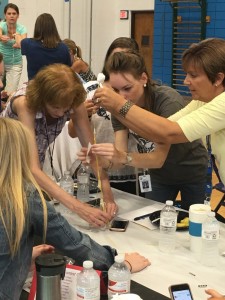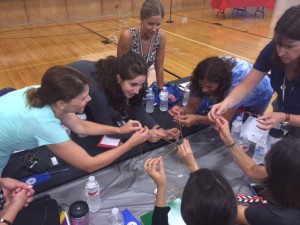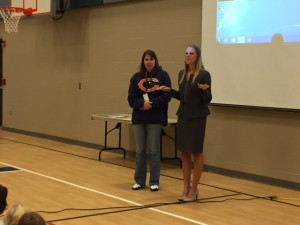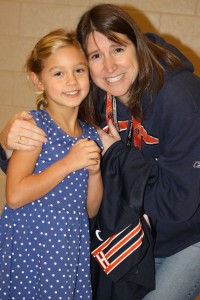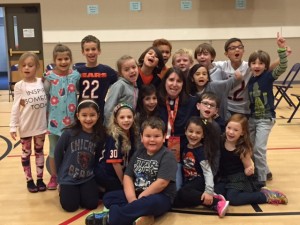Our brand, “The Wilmot Way” will continue to define who we are and what we do at Wilmot School. As we begin to understand and embrace the principles of grit, perseverance and a growth mindset, it is my hope that students, staff and parents will change the definition of failure from a lack of success to an opportunity for growth and learning.
What students have to say: Hannah, a fifth grader at Wilmot school, recently served as a student ambassador for a group of visitors from The ECRA Group. This group was touring our new learning spaces and listening to students share information as part of the District 109 strategic planning process. Hannah, along with four other student ambassadors, introduced our visitors to “The Wilmot Way.” Here is what Hannah had to say about grit:
When I first heard grit, I thought it meant gravel. But now, I’ve dug deeper into the word and found out that it means much more than that. When we were talking about grit in my homeroom, someone brought up Michael Phelps. Michael Phelps is a well-recognized Olympic swimmer, although his career has sadly ended. But throughout all of his Olympics, he has shown grit, and a whole lot of it. To be in the Olympics, you have to train a lot for four years. And Michael Phelps’s training schedule is insane. When he is at his hardest point in training phases, so probably close to the Olympic team tryouts, he swims 80,000 meters a week, which is almost 50 miles. He practices twice a day, sometimes more, and he trains five to six hours a day, six days a week. To keep this training schedule up takes a whole lot of grit.
Now that I’ve been talking about grit, you’re probably wondering, what is the definition of grit? Online, I found one. It is, “Grit in psychology is a positive, non-cognitive trait based on an individual’s passion for a particular long-term goal or endstate, coupled with a powerful motivation to achieve their respective objective.”
To be honest I didn’t understand half of that. So, unlike this definition, I’m going to be plain with what I think grit means. The definition of grit is everyone at Wilmot School. All the kids here want to learn, and strive to be the best they can be. All the teachers here seek the best in a student, and always succeed in bringing it out. As a girl who has been well educated for the past five years, I am proud to say that I go to Wilmot, the true definition of grit.
Instilling grit in our students will require all of us (teachers and parents alike) to change the way we think. We need to truly support risk taking, see failure as an opportunity for new learnings and growth, and develop agency and independence in our children. Students need to develop resiliency and accept that things may not always go as planned. As Hannah so nicely said, we want to create an environment where students strive to do their best and teachers bring out the best in every student! Embracing the idea of grit brings us one step closer to doing this.
